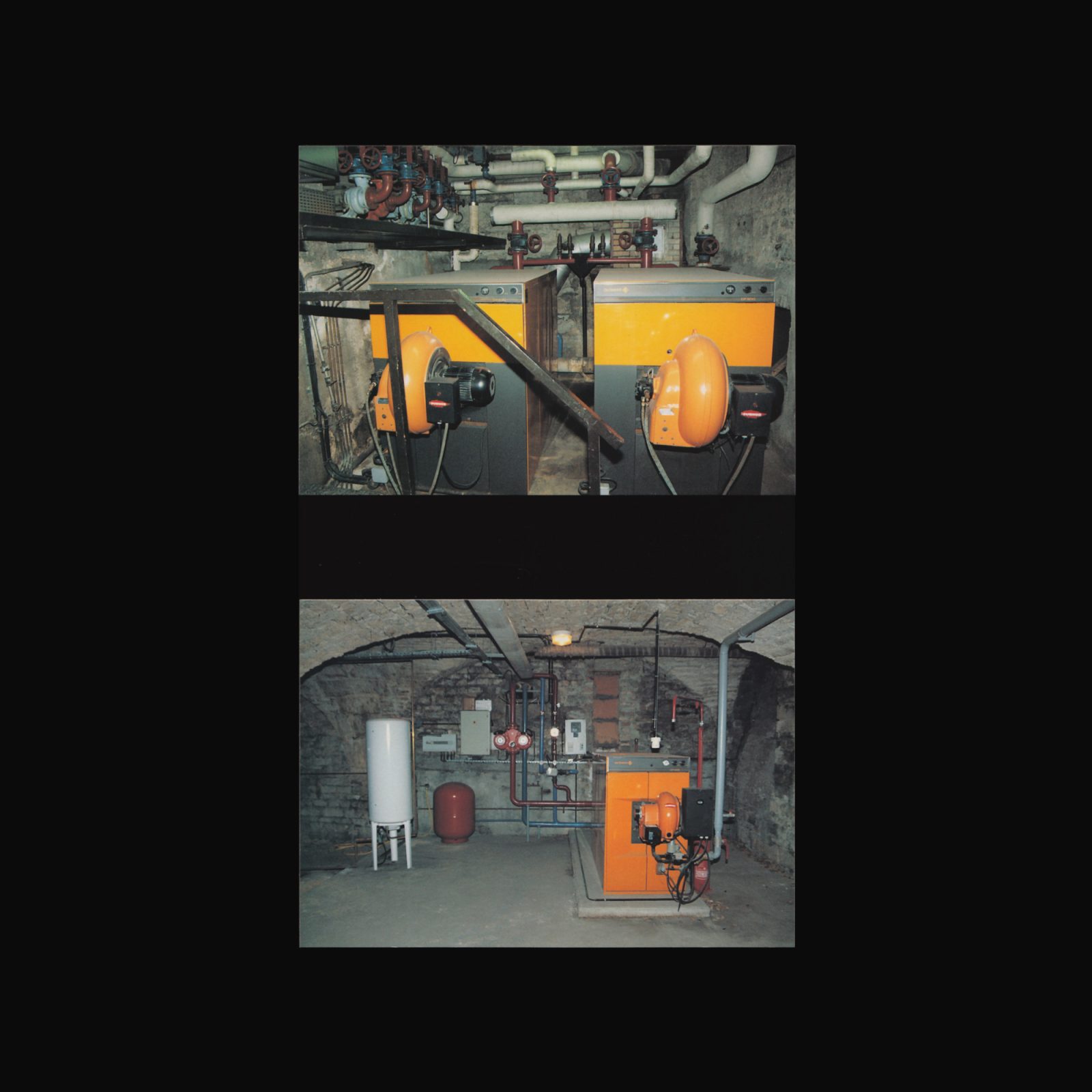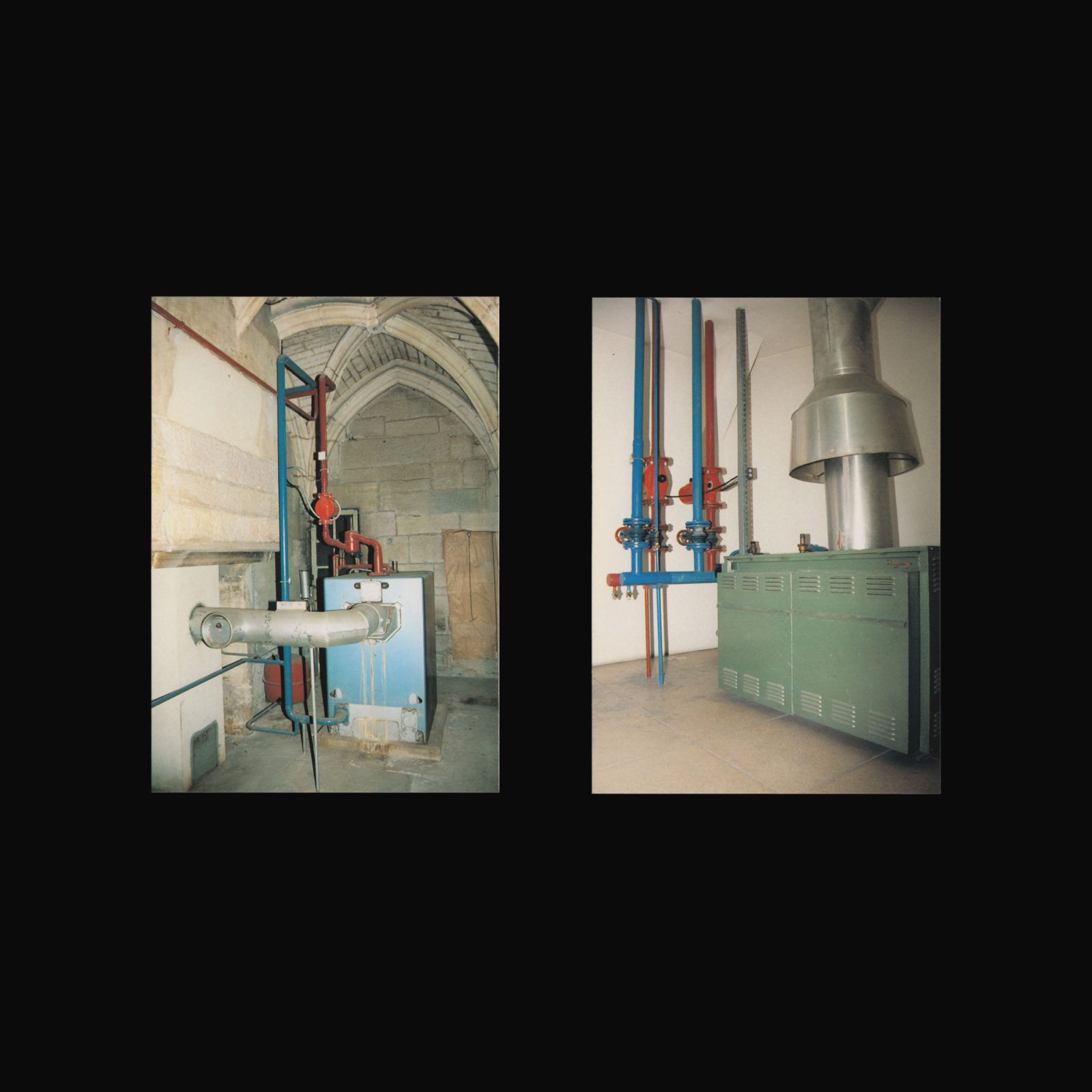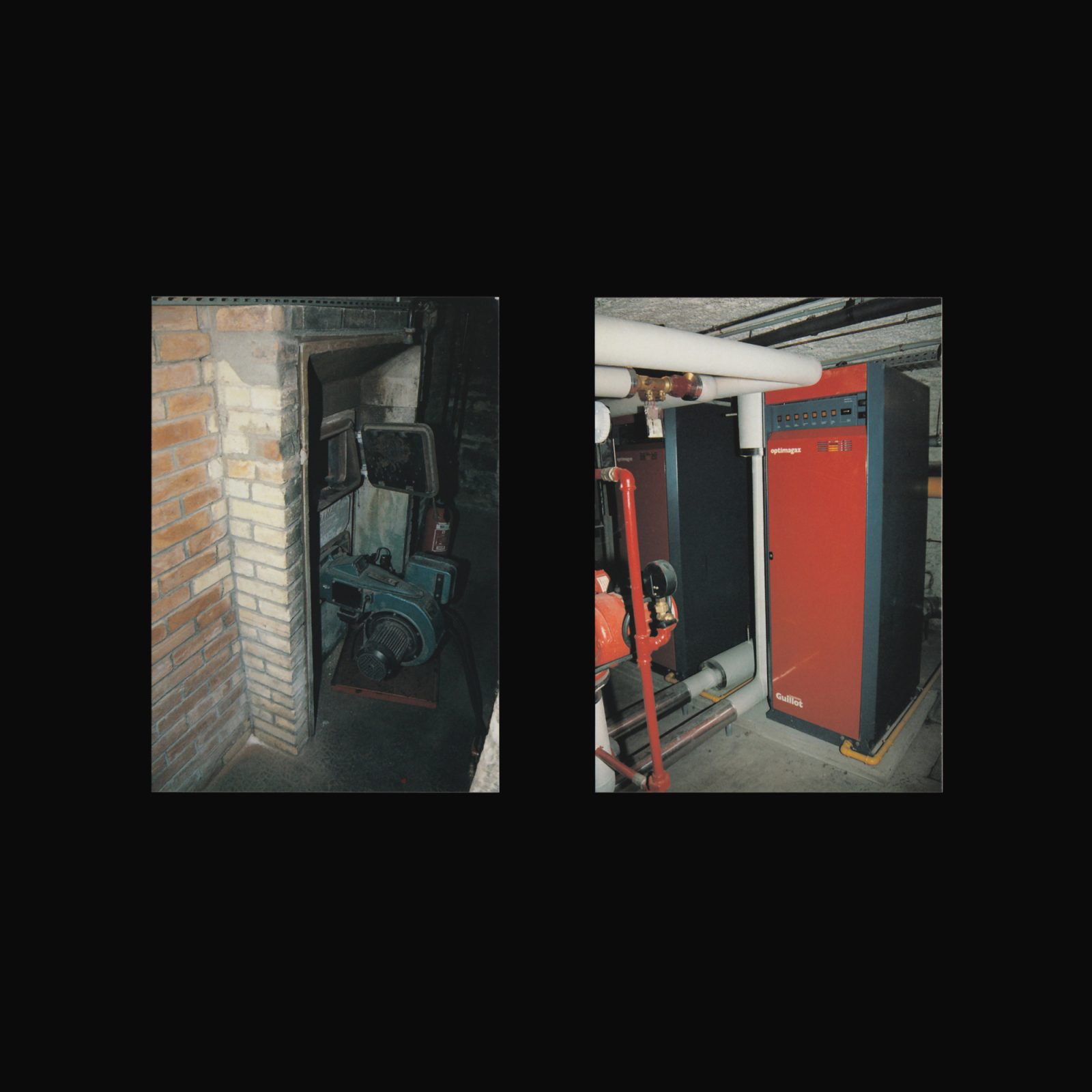Le Consortium, Dijon
Michael Asher
Produced on the occasion of Michael Asher’s exhibition at Le Consortium Dijon, 7 June–27 July, 1991.
The work on show in Dijon depicted the heating systems in the basements of sixteen of the well-known architectural landmarks in a city famous for its tourism. On the walls of the exhibition space Asher exactly reproduced the schematic engineering diagrams of interior axial cuts for the heaters belonging to each of the buildings chosen. Painted in black at the same height as the actual heaters, the diagrams, on a purely formal level, presented eccentric shapes and seemingly abstract designs while expressing vigilant precision and regulated linearity.
A set of color postcards, meant to have been sold in the city at souvenir stores and available for viewing and purchase at the reception desk, completed the exhibition as a whole. The photographs of the heaters-displayed on postcards as if they were historic monuments or scenic views-correlated with the schematic wall drawings, grounding them in the functional reality of furnaces composed of oil burners, water heaters, pressure tanks, gages, pipes, and so on.






























